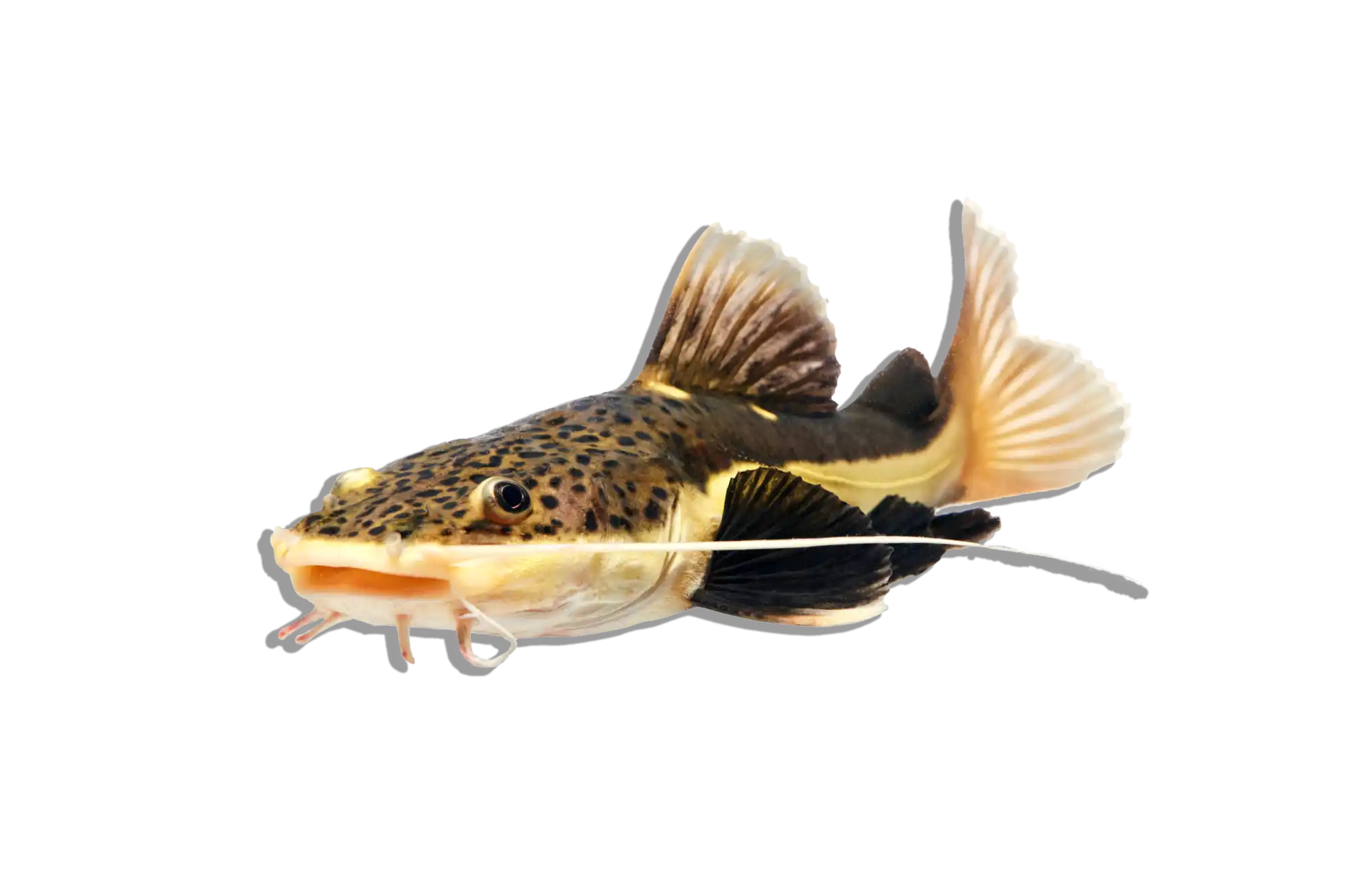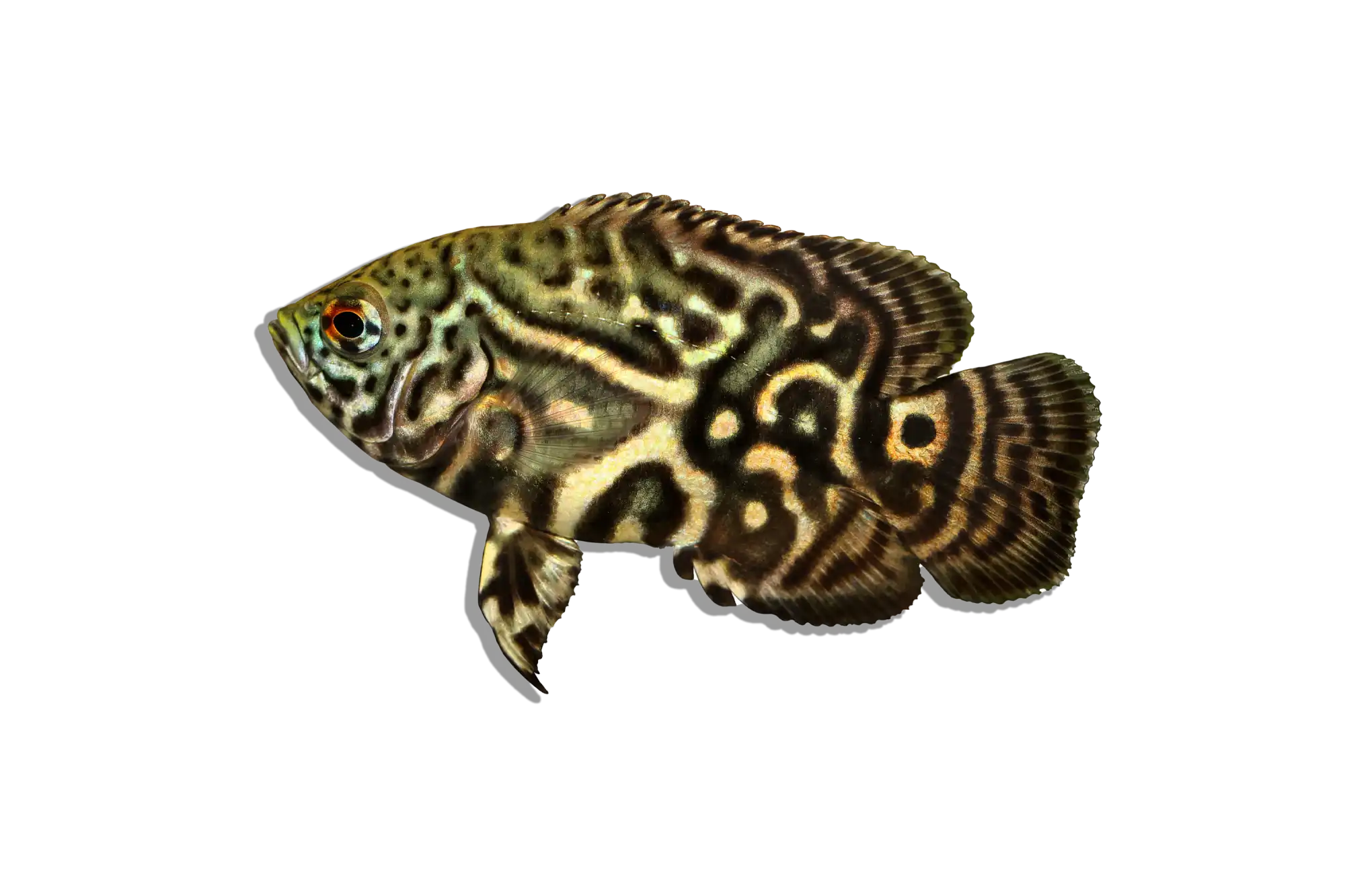Description
Common Name: Orinoco Peacock Bass
Scientific Name: Cichla orinocensis
Other Names: Butterfly Peacock Bass, Orinoco Butterfly Peacock
The Orinoco Peacock Bass, like other members of its genus, is a robust and strikingly colored fish. It sports a predominantly green and gold coloration, often with distinctive dark spots or patterns on its sides. The species often has a pronounced black “eye-spot” near the base of the tail, which can be a striking feature.
Habitat and Distribution:
Cichla orinocensis is native to the Orinoco River basin in Venezuela and Colombia. They inhabit slow-moving waters, such as river backwaters, lakes, and floodplain areas where they lurk amongst submerged structures to ambush prey.
Size and Lifespan:
The Orinoco Peacock Bass can grow up to 18-20 inches in captivity, although larger specimens have been documented in the wild. With proper care, they can live for 8-10 years or more.
Diet and Behavior:
Being a predator, the Orinoco Peacock Bass feeds primarily on smaller fish and crustaceans in the wild. In an aquarium setting, they can be fed a diet of high-quality pellets, live fish (like feeder fish), and frozen foods like shrimp. Their ambush predator nature makes them an exciting fish to observe during feeding times.
Breeding and Reproduction:
Peacock Bass are open spawners, typically choosing a flat substrate to lay their eggs. After spawning, both parents play a role in guarding the eggs and fry against potential threats.
Aquarium Care and Tank Requirements:
Due to their size and active nature, a large aquarium is a must. A minimum tank size of 150 gallons is recommended for a single adult, but larger tanks are preferable, especially for multiple individuals or community tanks. The tank should include hiding places using large rocks, driftwood, and robust plants, although they may uproot plants when they are in pursuit of food.
Ideal Tank Mates:
Orinoco Peacock Bass can be aggressive, especially during feeding or breeding. They do best with other large, semi-aggressive fish that can hold their own, such as other cichlids, catfish, or large characins. Smaller fish will likely become meals.
Difficulty Level:
Intermediate to Advanced. Their size, diet, and potential for aggression require experienced fish keepers who can meet their needs.
Water Parameters:
• Temperature: 75-85°F (24-29°C)
• pH: 6.0 - 7.5
• General Hardness (GH): 5-15 dGH
• Carbonate Hardness (KH): 4-8 dKH
• Ammonia: 0 ppm
• Nitrite: 0 ppm
• Nitrate: <20 ppm
Additional Information:
• Due to their aggressive feeding behavior, a secure lid is essential to prevent them from accidentally jumping out during feeding times.
• Regular water changes and powerful filtration are crucial to maintain good water quality, given their size and feeding habits.




















